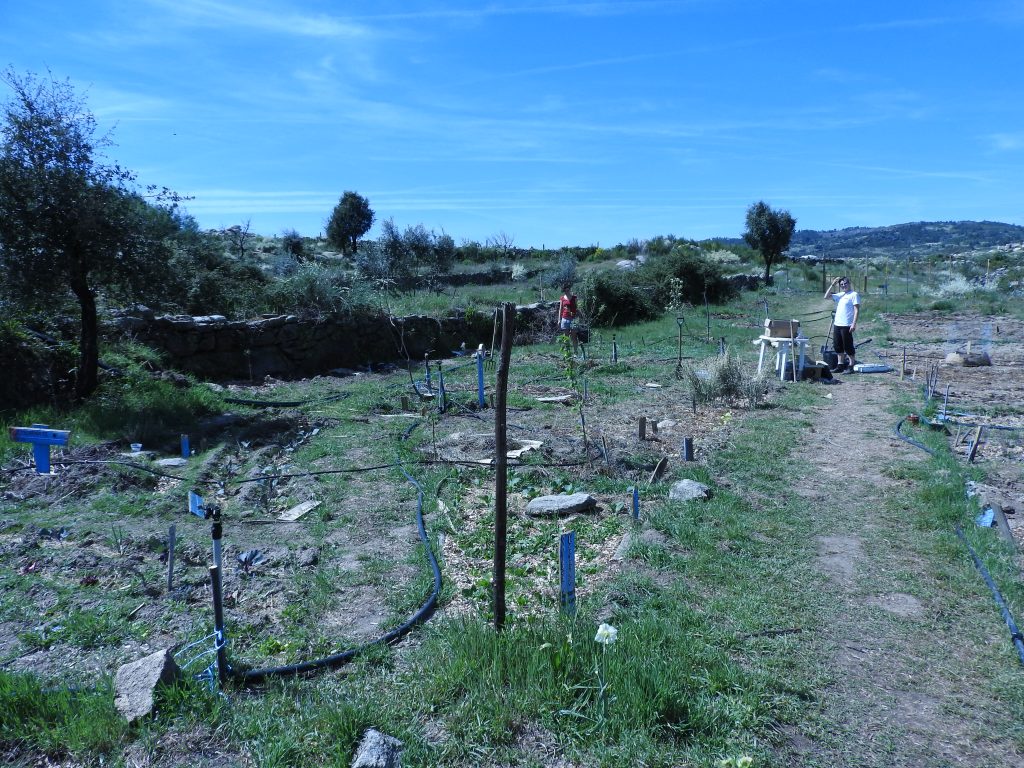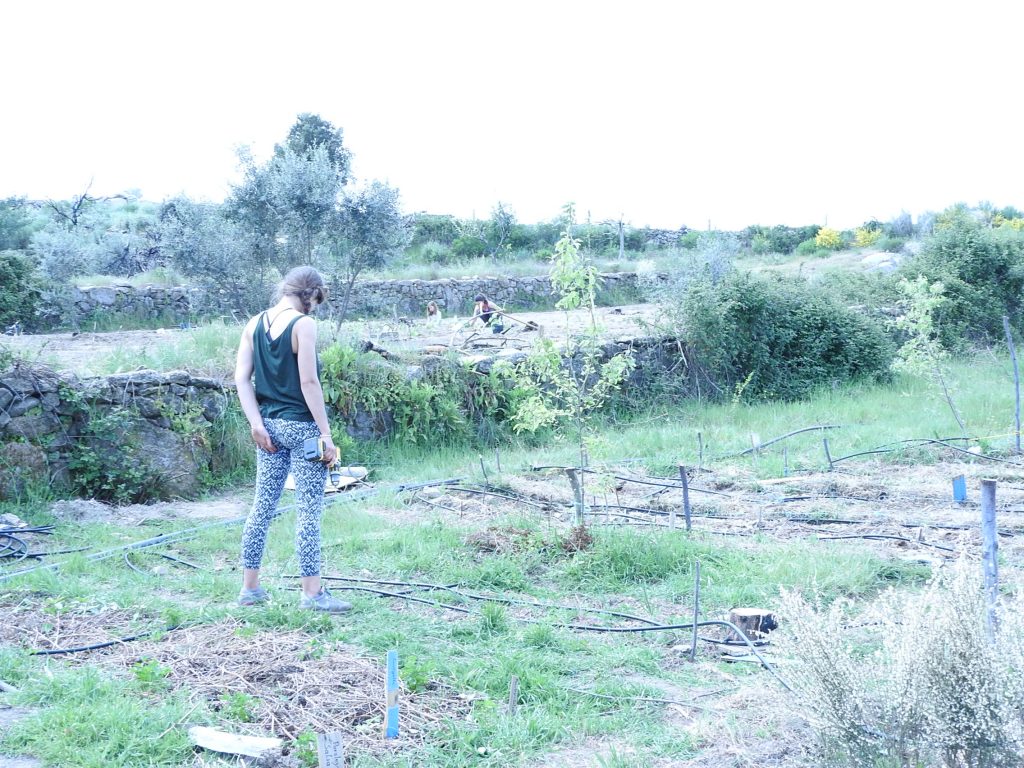With 46 acers of land, multiple fields, daily yoga classes, a community to run and a huge permaculture project, starting a food forest can be very overwhelming. We decided to fence off a smaller area which had three old burnt down pear trees, named it the pear food forest and made it our focus for the first half of 2017.

A food forest is a method of intensively gardening food, with as wide a variety of food coming from as many layers (canopy, tree, shrub, ground, underground and climbing) as possible and replicating a natural forest, a self fertilizig eco system of abundance.
As we are a volunteer based project, we decided to ask all our volunteers that when here during the winter to plant two trees. We asked each volunteer or community member to research one species of fruit tree and present their research back to the group so we could learn together. From this information, we knew where to plant the trees, what companion plants to plant with them and how to look after them. Each volunteer then went on to plant their trees and make a sign for the trees. This allowed for a lot of effort and love to be put into every tree that was planted and for me to collate all the information.

We would normally want to design the entire food forest first and then go out and source the trees, however as we were working on improving facilities on the land, had limited time to plant the trees (due to the rains stopping in march), we first sourced trees and planted them based on their requirement such as sun, soil, water and future size.
I also made scale drawing of the food forest so I can record what has been planted where to help us with planning where to plant each tree.

Each tree that is planted in the food forest is planted with larger spacing than usual to allow for light to come down between the trees to other layers of the food forest such as shrubs and ground layers. However right now as the trees are so small that leaves a lot of space between all the trees. We decided to make annual vegetable patches in all the space we could between the trees in the pear food forest so we can get the maximum amount of food from the space and minimise the amount of area that we have to check and irrigate daily.

As we learnt on a food forest course with Doug Crouch in Portugal, the method we use to plant trees is as follows, we remove the grass and weed top layer with a hoe, create a circular mound so that when you water the tree it can fill up with water and slowly sink down into the ground instead of spreading around. We then dig a hole for the tree, plant it, plant a few other items in the guild, then spread a thin layer of compost, then a thick layer of green mulch (grass, wild green leaves, broom, ferns) , then a thick layer of brown mulch (dried ferns, homemade wood chips, dried dead plants, leaves, twigs, cardboard), the brown mulch is most important as this feeds the fungi in the ground which has a symbiotic relationship with the trees and making them thrive. At this point stepping in the circle or the mound is prohibited as that can damage the fungi we are trying too promote. The mulch also keeps the weeds out and sun from drying out the soil.

Every tree attracts different pests and ideally a gardener would plant plants that deter these pests next to the tree, or plant plants that attract predatory insects that eat the pests. We would also plant plants that attract pollinating insects for trees that are pollinated by insects, include plants that fix nitrogen or biodynamic accumulators or just plants that provide ground cover to prevent weeds such as new Zealand spinach, ultimately we check all our books for each tree and type in google ‘companion plants for xxx tree’ and ‘xxx tree guilds in good forests’, read a few results and plant what comes up if we can. The only issue is that when we have a lot of work on the farm, a lot of trees that need companion plants and a limited variety of plants in the local shops its very hard to complete guilds as desired. We ended up being quite limited on companion plants to plant in the guilds, so we bought the seeds online and planted them in the greenhouse for a future of abundance of perennials we can plant in guilds with the trees. we also visit local projects and got lots of cuttings which we planted. N.b. A guild is the group of companion plants planted around a tree (including the tree)

I also planted shrubs and berries along the walls that get some shade and spread perennial strawberries and spinach along the ground between them. Along the other edges with fencing we have planted vines, kiwis and passion fruits to climb up. All of these shrubs, climbers and ground cover have also been planted around the food forest

More recently we planted indicator plants next to each tree, I either planted a pumpkin or a tomato next to each tree as they will wilt when the ground is dry, indicating we haven’t watered the guild enough so we can water them before it gets too dry for the tree.

When the rains stopped we started to get bored of carrying buckets to every tree so I bought two 16mm irrigation pipes and some drip nozzles and rolled out one for each half of the food forest, I then water them deeply two of three times a week and plan to reduce that to 2 times a week later in the year and 1 time a week next year. I then turn them on, walk along the irrigation route, check for issues, weed and mulch, its much more fun than carrying buckets.

I also installed sprinklers and found that the just spread water everywhere including the paths which was a waste so we have been switching these out for drip irrigation which saves a lot of water. We have ditches in annual beds and next to trees which can fill with water from the drip and slowly penetrate the soils to encourage root growth.


For more about food forests please click here
If you want to learn more about food forests, help improve this one and plan the next one while living in nature and practicing daily yoga and eating healthy food, please join the community as a short term volunteer












